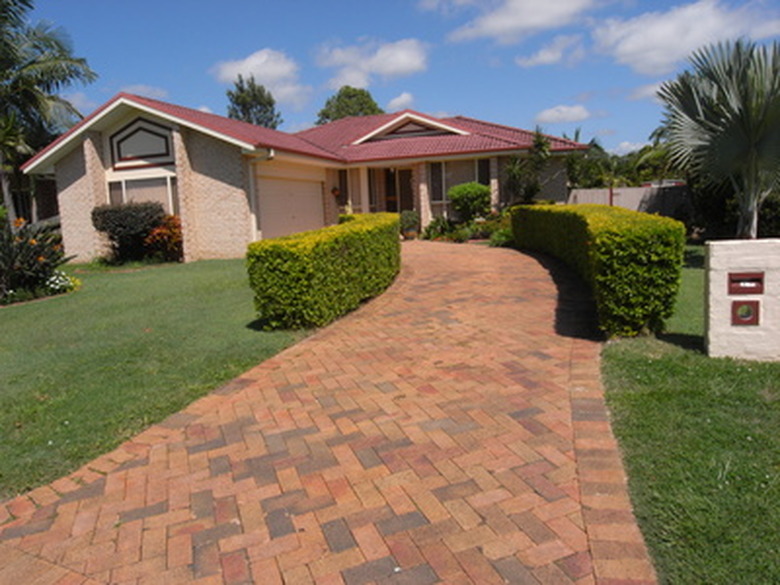How To Fertilize Hedges
Whether deciduous or evergreen, hedges are heavy feeding plants that require annual fertilizing to maintain their appearance and produce ample foliage. Hedges can be fertilized using a either a slow-release phosphorous fertilizer or an organic fertilizer mix. The best time for hedge fertilizing is in early spring, as the fresh fertilizer will give the hedges the energy necessary to produce lush foliage.
Chemical Fertilizer
Step 1
Sprinkle phosphorus fertilizer with a scoop around the base of the hedges out to a distance of 2 feet. Spread 1 lb. of phosphorus fertilizer over 25 feet of hedge row. Read the instructions to verify the proper amount of fertilizer for your hedges.
- Whether deciduous or evergreen, hedges are heavy feeding plants that require annual fertilizing to maintain their appearance and produce ample foliage.
Step 2
Water in the fertilizer using a garden hose. Fill the hedge's bed completely with water and allow the water to sink into the soil.
Step 3
Repeat Step 2 to ensure that all of the fertilizer is washed into the soil.
Organic Fertilizer
Step 1
Sprinkle fish-emulsion fertilizer around the base of the hedges with a scoop. Apply 1 tbsp. of fertilizer around the base of each hedge.
Step 2
Mix the fish emulsion fertilizer into the soil using a small hand rake.
- Water in the fertilizer using a garden hose.
- Sprinkle fish-emulsion fertilizer around the base of the hedges with a scoop.
Step 3
Water in the fertilizer using a garden hose. Fill the hedge's bed completely with water and allow the water to sink into the soil. Repeat this process once to ensure that all the fertilizer is washed into the soil.
Fertilizing Hedges
Fertilizing hedges is more of an art than a science. The type and amount of fertilizer needed depends the shrub variety, age of the hedge, the spacing of the shrubs and the growing conditions. Soil testing gives accurate information for fertilizing hedges. Over-fertilizing hedges causes excessive growth that requires additional pruning and makes hedges susceptible to cold injury and breakage during heavy winds. Balled and burlapped and bare root hedge plants take an especially long time to establish and shouldn't be fertilized in the first season unless the soil quality is poor. Fertilize fall-planted hedges in spring, and wait six to eight weeks before fertilizing spring-planted hedges. As a general guideline, sprinkle 1 teaspoon of a 16-4-8 fertilizer or similar high-nitrogen product around the edges of each planting hole, or apply the product according to the manufacturer's instructions. Organic fertilizers offer the benefit of being slow-release, so are less likely to burn hedge plant roots or leach into ground water, but plant response may be slow and some products don't give nutrient analyses.
- Water in the fertilizer using a garden hose.
- Balled and burlapped and bare root hedge plants take an especially long time to establish and shouldn't be fertilized in the first season unless the soil quality is poor.
Things Needed
- Slow-release phosphorus fertilizer
- Scoop
- Garden hose
- Fish-emulsion fertilizer
- Hand rake
References
- "Complete Trees, Shrubs and Hedges: Secret for Selection and Care"; Jacqueline Heriteau; 2005
- Organic Gardener: Fish Emulsion and Fish Meal
- Missouri Botanical Garden: Camellia Japonica
- North Carolina State University Cooperative Extension: A Gardener's Guide to Fertilizing Trees & Shrubs
- UMass Amherst Landscape, Nursery and Urban Forestry Program: Fertilizing Trees and Shrubs
